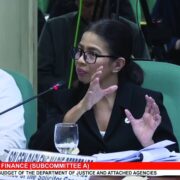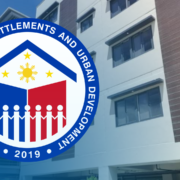DA: Start flagging shady farm-market road works

The Department of Agriculture (DA) is preparing to launch an online platform designed to improve oversight of upcoming farm-to-market road (FMR) projects and curb corruption in their implementation.
Through the FMR Watch website, individuals and groups can upload photos, report progress and flag issues directly from the construction sites.
“We will do a number of things like the FMR Watch website, wherein our netizens or ordinary citizens or local government officials could help monitor projects and upload photos into that website so we at the DA could track their progress, or lack thereof,” Agriculture Secretary Francisco Tiu Laurel Jr. said in a statement on Tuesday.
He urged farmers, local governments and ordinary citizens to help monitor FMR projects as inefficiencies and corruption in rural infrastructure continue to affect food production and farmers’ income.
“We need everyone’s help to monitor all of these FMR projects in order to do them properly at the fastest possible time,” Tiu Laurel said.
According to the agriculture chief, the DA will also develop a portal that will allow people to check the exact location of agricultural road projects as well as visit and inspect these sites.
“These initiatives, we believe, will greatly help in keeping everyone honest and ensure precious public funds do not end up in some unscrupulous individual’s pockets,” he said.
To date, eight out of the almost 3,000 validated FMR projects have been flagged as missing and partly missing in Davao Occidental and Zamboanga City.
The DA is conducting an audit of some 5,000 kilometers of FMRs completed in recent years to verify whether these met technical specifications and were finished as planned.
Starting 2026, the DA will also take over the construction of FMRs from the Department of Public Works and Highways.
Tiu Laurel earlier said the DA expects to save at least 20 percent in construction costs once it handles the FMR program.
According to Tiu Laurel, the current cost of building a kilometer of a concrete, two-lane FMR averages P15 million, but the DA’s internal management and use of new technologies can bring this down to P12 million or lower with the use of different methods such as soil stabilizers, which provide long-term permanent strength, in certain areas.
The Marcos administration initially proposed P16 billion for FMR projects in 2026, or enough to build about 1,000 kilometers of rural roads.
The House of Representatives has since doubled this to P32 billion following the President’s directive to realign flood control funds to priority agricultural infrastructure.
With double the budget and cost-cutting measures in place, the DA said it hopes to accelerate market connectivity for rural producers, boosting farm incomes while helping stabilize food prices for consumers.
Tiu Laurel said the DA will work closely with local government units, civil society groups, and the Philippine Army’s Corps of Engineers to ensure transparency and speed in their construction.
“We want every peso to go to real roads that benefit real farmers—not into the pockets of corrupt officials,” he said.
The DA’s National Farm-to-Market Road Network Plan 2023-2028 has identified about 131,000 km of potential FMRs nationwide, of which around 70,000 km have been completed.
At the current pace, however, the DA said full completion could take 60 years.
“We can cut that time in half with stronger coordination and smarter spending,” Tiu Laurel said.
Priority areas
The DA is also urging congressional support for the proposed FMR Development and Equity Act, which aims to create a more transparent and equitable framework for FMR investments nationwide.
Tiu Laurel underscored that FMRs are not just infrastructures, but essential lifelines that connect farmers, fisherfolk, and livestock producers to markets and economic opportunities.
“Every kilometer of FMR we build is a pathway out of poverty for rural communities. But with a staggering 36,000-km backlog, we need a comprehensive, fair, and sustainable approach. This bill delivers that,” he said.
Under the proposed law, at least 30 percent of FMR funds will be earmarked for rural areas with a high incidence of poverty.
The rest will be in key regional growth corridors identified by the Department of Economy, Planning and Development and the Regional Development Councils.
These include major commodity production zones under the DA’s agricultural modernization plan, fisheries development areas designated by the Bureau of Fisheries and Aquatic Resources, livestock clusters under the National Livestock Program, and geographically isolated and disadvantaged areas such as upland barangays and island municipalities.
“This is about ensuring no farmer or fisherfolk is left behind just because of where they live,” Tiu Laurel stressed.
He said well-planned and properly implemented FMRs will not only lower food prices, reduce postharvest losses and raise farmer and fisherfolk incomes, but will also address peace and order issues and improve overall connectivity for remote and underserved communities.





















